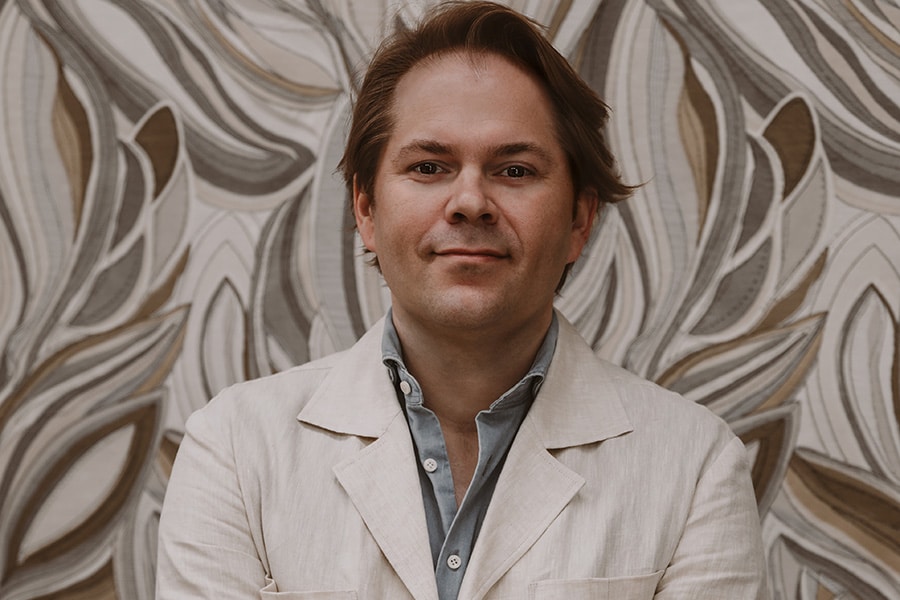
Towards the sustainable living environment
'Reducing scale and increasing stewardship as means to improve habitat'
What does the future of the Netherlands look like? Can we - given population growth - continue to live 'beautifully'? We talked about this with Francesco Veenstra (1973), partner at Vakwerk Architecten and since September 2021 also Chief Government Architect and chairman of the Board of Government Advisors. The Chief Government Architect provides solicited and unsolicited advice on the architecture and urban environment of the Kingdom's real estate.
1. What is "Beautiful Living?
"That's a good question. But also a difficult one to answer. What is 'beautiful' to one person is 'not beautiful' to another. It's subjective. However, I start from the perspective that people should feel comfortable in their residential and living environment. For example, I think about the quality of outdoor space, safety, greenery in the area, the presence of amenities, the role that landlords can play, the presence of public transportation, the affordability of one's home. People do not want to stay in a desolate place. Not everyone has the choice to change their surroundings, to move to a better place, or to improve their own living environment. But in general - I think - many Dutch people are satisfied."
"Well, if these aspects are all in order, then everyone is happy and at ease, right? So that should be the goal. Fortunately, I see that Public Housing is back on the agenda. It is on the political agenda: making sure that everyone in the Netherlands has a safe and affordable place to feel at home. If that succeeds ... yes, then everyone really knows what 'beautiful living' is!"
2. But then, are there still places in the "full Netherlands" where we can realize that "beautiful living"?
"Yes, there is definitely still room. But not everywhere. I was recently in East Groningen. There is still plenty of space there, yet that is not an ideal location for settlement right now. There is little employment and transport links are limited. So here it's also about creating facilities that make it a more attractive prospect to settle there."
"But something else is at play. All the space claims there are in the Netherlands are now more than ever linked to energy transition and climate change. It makes the design of the country a super-complex task. Yet you can reduce it to a simple principle such as a "sustainable living environment. We are moving towards living, working and recreation based on social values. This means, for example, that in time economies of scale will no longer pay off. As far as I am concerned, more fine-grained networks in neighborhood structures must be created. For example, just to prevent loneliness of people! Scale reduction and decentralization increase the chances of connection and involvement. It is up to governments to facilitate physical connections."
"So also: more local housing facilities that people will naturally feel responsible for. This will result in less car mobility, smaller schools, more greenery and certainly more diversity in cities. And natural energy supplies will soon also be local; generation and storage close to where it is consumed."
"In the future, we will also handle space better ín buildings. For example, you can combine a school building with district functions, so that it can also be used in the evenings and weekends. I see these kinds of solutions as part of the question of how to handle space (smarter)! "
3. Has the corona crisis affected the way of thinking about "living" in the Netherlands?
"Yes. Things have been shaken up quite a bit. There has also been a tipping point. The climate goals and energy transition have definitely created a different vision of the achievements of our society versus the liabilities. Experts and scientists are helping to look at the future of the Netherlands and develop explorations of how we will live and work together in the future. As designers, we are able to visualize these explorations and take people with us to a changing Netherlands. The corona crisis has made us realize that things have to be different and also that they really can be different."
4. So what challenges do (landscape) architects face in their daily work?
"(Landscape) architects may remind their clients of stewardship more than before. For example, I still see business parks - after they have been 'written off' - left orphaned and exchanged for a new and larger business park. That has to be improved. If you (really) want to design and build for the future, it's about taking responsibility for what should happen to that building, site or environment after that period. We should all develop a more critical attitude to this. During the design process, you can ask yourself and your clients important questions about this."
5. Your term as State Architect runs through 2025? With what "merit" would you like to step down?
"I didn't become Chief Government Architect to leave my legacy as a legacy. If we manage to properly address the problems and challenges of the limited space in the Netherlands now, and combine that with the right solutions for a sustainable country, then I expect that we will give an impetus to the sustainable living environment. To that ambition I want to commit myself."




